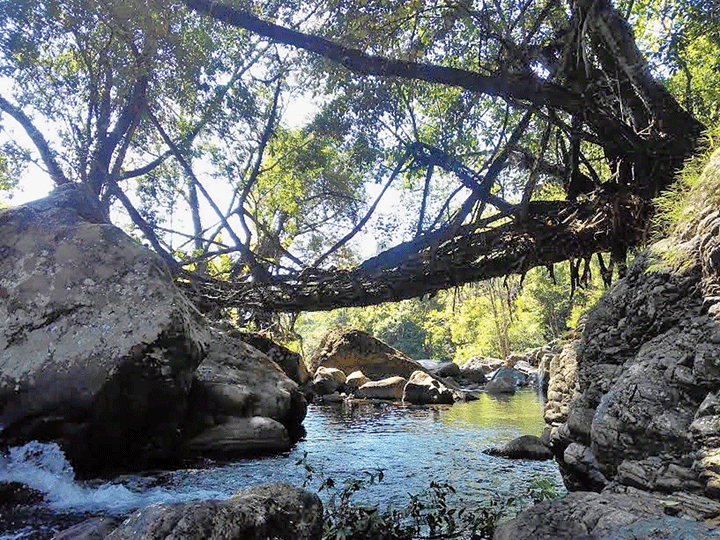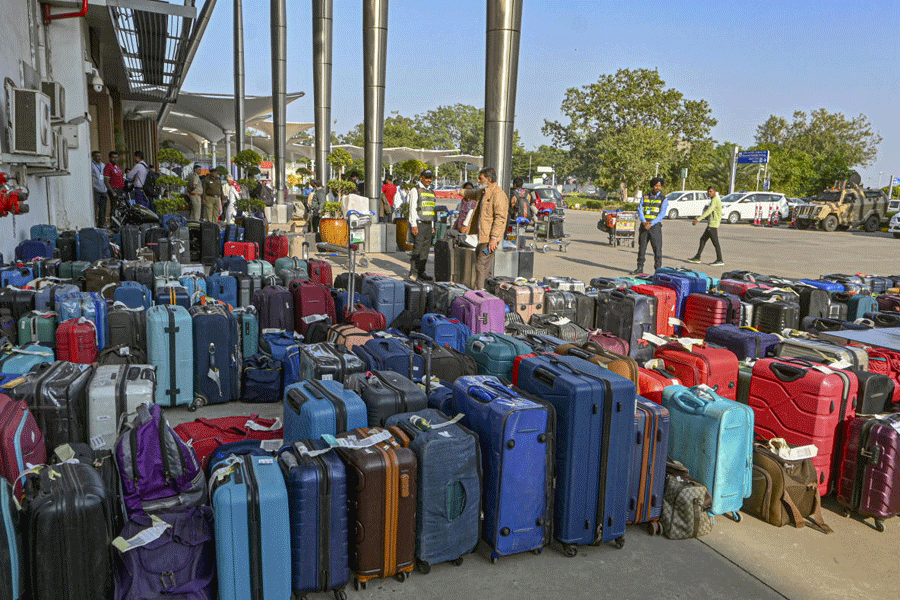A group of German researchers, who carried out a scientific study of living root bridges in Meghalaya for the first time, have claimed the structures can provide a template for development of modern architecture.
The study, Living Bridges Using Aerial Roots of Ficus Elastica — An Interdisciplinary Perspective, published in the journal Scientific Reports, said the technique of using aerial roots of Ficus elastica to form bridges was a unique example of botanical architecture grown without the tools of modern engineering design. While there are quite a number of examples of living architecture worldwide, living root bridges are the only known example of repeated, predictable use of tree growth for structural purposes, it said.
Ficus elastica is a facultative hemiepiphyte, which belongs to the group of “strangler figs”. In these species, germination of bird-dispersed seeds in the canopy of a host tree is followed by an epiphytic growth phase. In later stages, aerial roots are developed, which grow downwards from branches of the host tree or along its stem and finally root in the ground. Locals use the aerial roots to build living bridges, which strengthen themselves over time owing to adaptive secondary growth and their capacity to form a mechanically stable structure.
Ferdinand Ludwig, a professor of green technologies in landscape architecture at Technical University of Munich, and Thomas Speck, a professor of botany at the University of Freiburg, have analysed 74 such bridges.
The researchers conducted interviews with the bridge-builders in order to gain a better understanding of the process. They took several thousand photographs of the bridges which they used to create 3D models, providing insight into the complex root structure.
The special features of growth and mechanical properties of the aerial roots have been well known and utilised for centuries by indigenous Khasi and Jaintia people in the subtropical moist broadleaf forest eco-region of Meghalaya. It takes decades, if not centuries, to complete a living bridge made of Ficus elastica. Inhabitants of isolated villages have devised a way to construct bridges with living aerial roots of ficus elastica to cross rivers in spate.
“The bridges are a unique example of future-oriented building. We can learn much from this: today we are faced with environmental problems that will not only affect us, but also subsequent generations. We should approach this topic as the Khasis have. The findings relating to the traditional techniques of the Khasi people can promote the further development of modern architecture,” said Ludwig, who is also an architect. He integrates plants as living building materials in his plans and structures.
“Knowledge about the traditional Khasi building techniques has hardly ever been put down in writing in the past,” said Wilfrid Middleton of the department of architecture, Technical University of Munich.
“In our opinion, the techniques developed over many centuries by the Khasis offer great potential for finding new solutions here; the targeted growth of aerial roots and their transformation into artificial structures can produce new forms of living architecture and urban greenery. It could enable a fusion of trees and buildings, as we have been researching and practising with native tree species in Europe for many years. Our intention is not to implement something like living bridges in our cities today. But what our cities need more than ever is ‘green infrastructure’,” Ludwig told The Telegraph.
“In other words, as many trees and green spaces as possible to form a green network. We urgently need them since green infrastructure is the only known approach to improve the microclimate in cities by cooling and purifying the air and providing shade,” he added.










